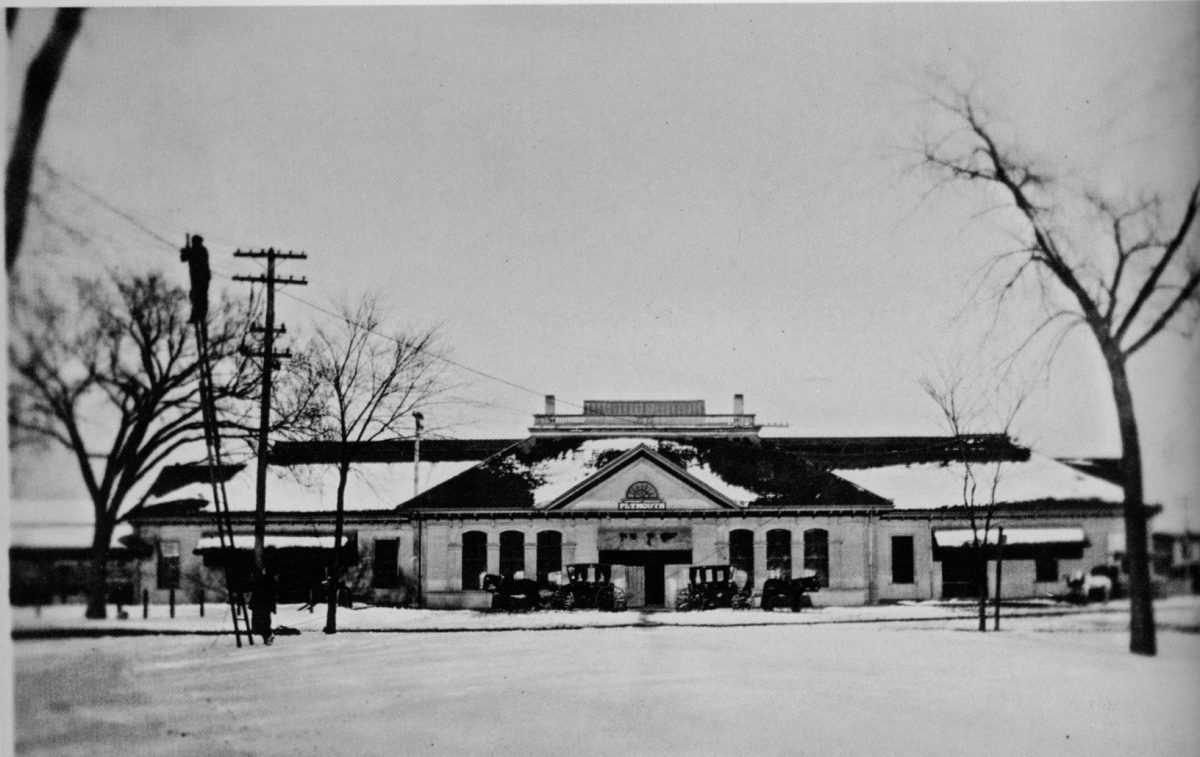There’s a piece of Plymouth history that has forever frustrated me. That’s why I’m seeking assistance from readers of the Plymouth Independent. You have reached out to me for additional details every time I write a column – it’s been incredible. Now I could use your help. Bear with me while I detail a piece of our history and ask for you to finish the story.
It begins in 1845 when passenger rail service arrived in Plymouth. The railroad was owned and operated by the Old Colony Railroad, or OCR. In 1846, the OCR built a station located near the current Citizens Bank at the eastern end of Park Avenue. Maps from 1846 and 1857 show a simple square building that represented the station. There are no known drawings or photographs of this early building.
Sometime after 1857 and prior to 1905, the station was either expanded or entirely rebuilt. Early photographs of the building indicate a large, square one-story building with two symmetrical one-story wings. It’s unclear if the main structure was masonry or wood, but the wings are clearly wooden and covered with shingles. Early photographs and the 1882 birds eye view map show a large portal on the north end. It allowed the coaches to enter the building, so passengers could board without exposure to the elements.
Operations continued under the OCR with multiple acquisitions and mergers with other railroads. By 1892, OCR’s reach extended to Fall River, Newport, RI, and to all of Cape Cod. This would change in 1893 when the New York, New Haven, and Hartford Railroad would secure a 99-year lease for all of the OCR properties and lines.
The NYNH&H railroad also acquired the two lines that served Plymouth, as well as three stations in town. (In addition to the main station, there were two other depots.)
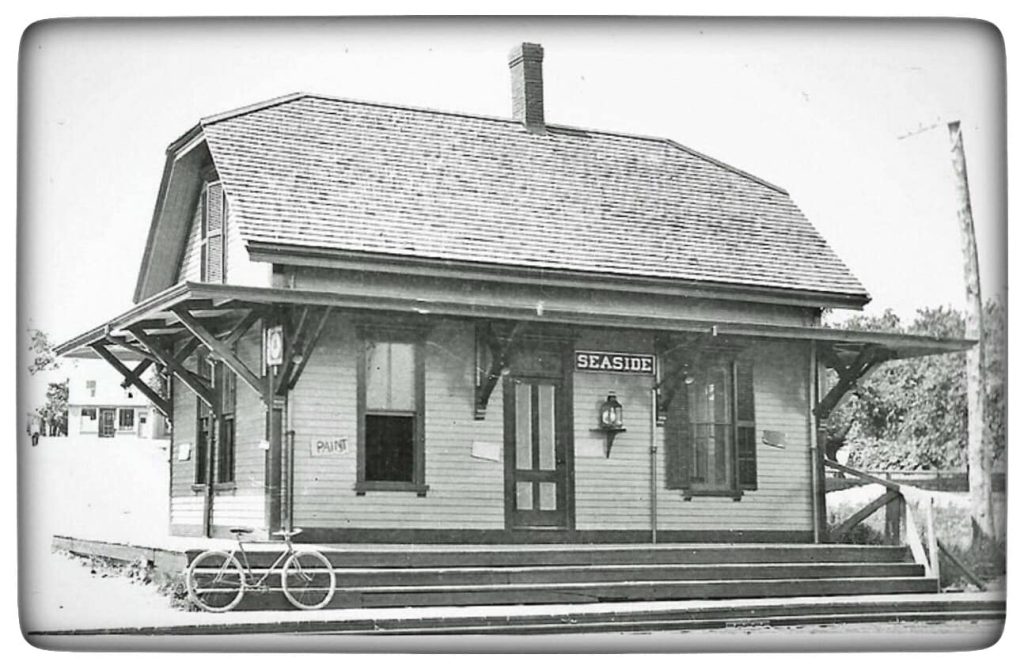
A small secondary depot was on the Plymouth/Kingston line. Located at the base of Boundary Street, the small Victorian station had several names throughout its history. It began as the North Plymouth station and became a stop around 1873. Towards the end of the 1880s, the station was renamed Seaside. Seaside was generally recognized as the area from the Cordage Company to Rocky Nook. The name would remain in place until 1925 when the station was renamed Cordage. The Cordage name stuck until the station closed in 1959.
Darby Station was the town’s third passenger station, located on the Plymouth to Middleborough branch line. The line split off from the main Plymouth/Boston line around the intersection of Water and Lothrop streets. It arced slightly west and across Court Street at the Bennys Plaza via a bridge. Itcontinued west following the path of the current Gould Road and then crossed under a bridge that spanned Standish Avenue. The line ran through the area of the current Plymouth Industrial Park. I have childhood memories of picking blueberries along the abandoned line. Before crossing into Carver, the train made its first stop at Darby Station. That station was located near a small village that was centered around Darby Pond and along Carver Road.
The Middleborough branch was a commercial failure. Incorporated in 1890, it was opened in 1892 and leased to the OCR the next day. The line ceased passenger service in 1925, freight ran until it shut down in 1934. Cranberry operations kept portions of the line in Middleborough open till 1937.
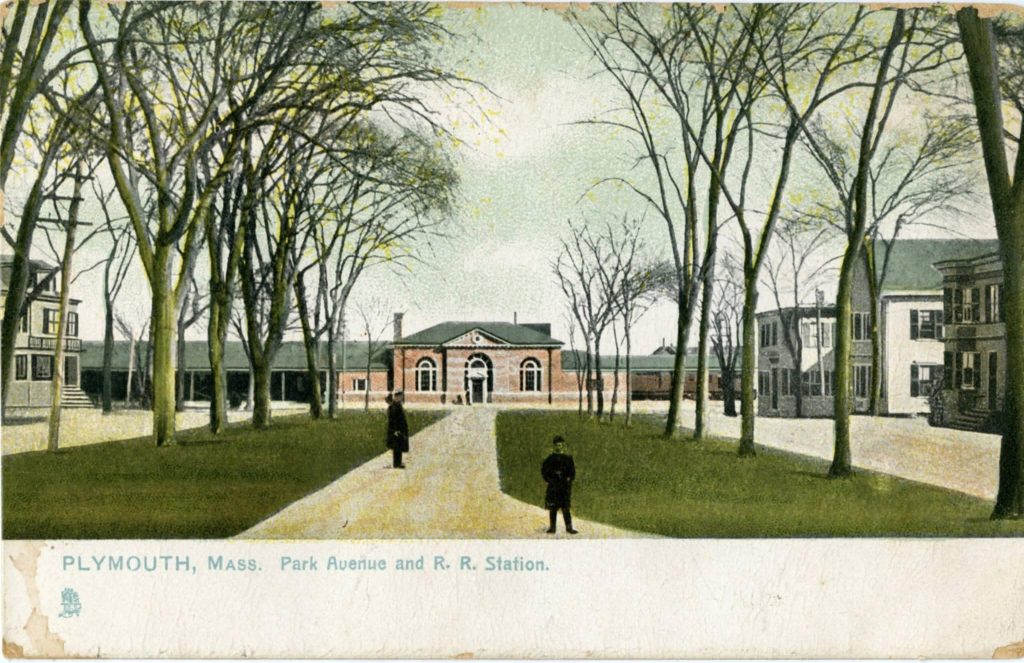
Back at the Plymouth main station, major renovations and rebuilding began. Between 1905 and 1906 a new station arose in the same location as the 1860s station. The difference now was that passenger platforms were on the exterior of the building. The new station would serve Plymouth until 1959.
A former employer told tell me the story of why passenger service to and from Plymouth ceased. The NYNH&H had a meeting in Boston to discuss the end of passenger srvice. The executives asked those gathered whether they had driven up to Boston for the meeting. The response was almost unanimous – car was the mode of transportation. The answer was all the executives needed to hear. The deal was done.
Freight would continue on the line into the late 1960s, and occasional box cars would be seen on the line into the ‘70s. 1976 would mark the last time a train would travel as far as the original terminus at Park Avenue when a traveling Bicentennial exhibit arrived in town. Shortly thereafter, construction began on the Citizens Bank and the Village Landing.
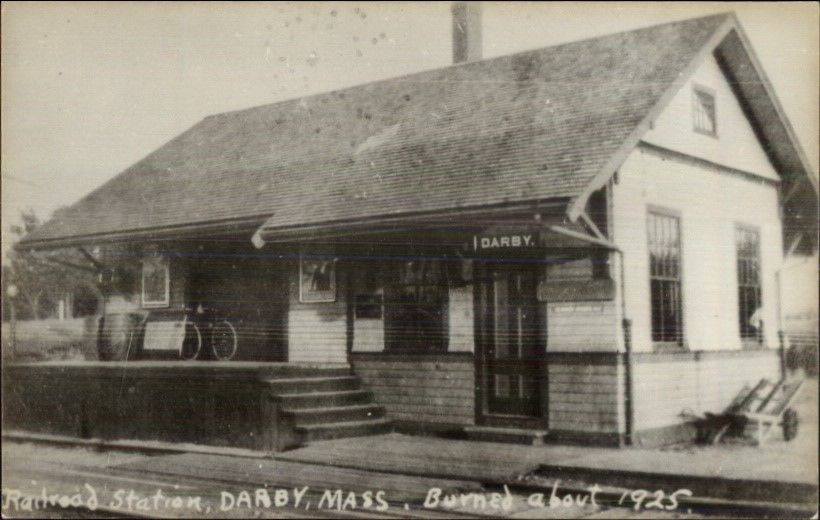
It would be another 38 years before passenger service would be reinstated in 1997. But the new station at Cordage Park was just a platform with a roof. Arrival and departure times at the new station were far from convenient and would include a stop in Kingston after the train would travel north and then backtrack south to Kingston. MBTA funding for Plymouth was inconsistent, and the station closed indefinitely in 2021 when the T made widespread budget cutbacks because of decreased demand due to the Covid-caused economic slowdown.
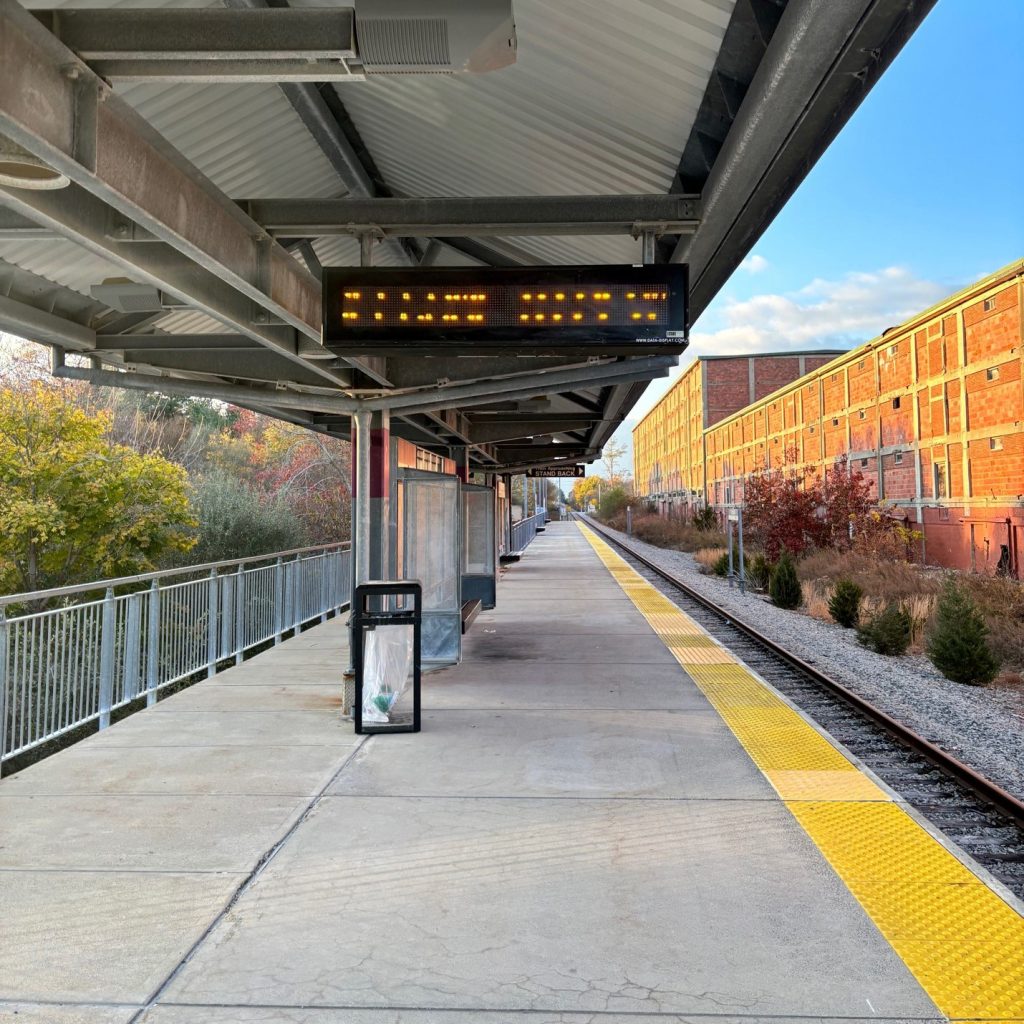
It’s been 179 years since train service came to Plymouth and it’s fairly easy to trace its history. We have photos of most of the stations, the location of the lines, and even the trains themselves. What I find frustrating is the lack of interior photos. I have never seen floor plans or a single interior photo of the stations. In the period between 1905 and 1959 we saw two World Wars, the Korean war, and countless life events. One would think that folks leaving Plymouth would have taken photos with loved ones inside before they boarded a train.
That’s why I’m reaching out to you. Do you have family photos taken inside one of the stations? Maybe it’s Mom and Dad leaving on their honeymoon or your grandfather leaving for Europe during WWI. I would love to see them.
There is also some confusion about dates of the demolition of the Park Avenue station. Trains still arrived and left there after the razing, but the station itself had been replaced by an A&P. (I don’t have a date for the construction of that store.)
I’m also curious about what happened to the Cordage and Darby stations. Were they fully demolished or perhaps moved and converted to residences or other uses. It’s a lost piece of Plymouth history that I’m hoping we can re-tell.
Architect Bill Fornaciari, a lifelong resident of Plymouth, is the owner of BF Architects in Plymouth. His firm specializes in residential work and historic preservation. Have a question or idea for this column? Email Bill at billfornaciari@gmail.com.

